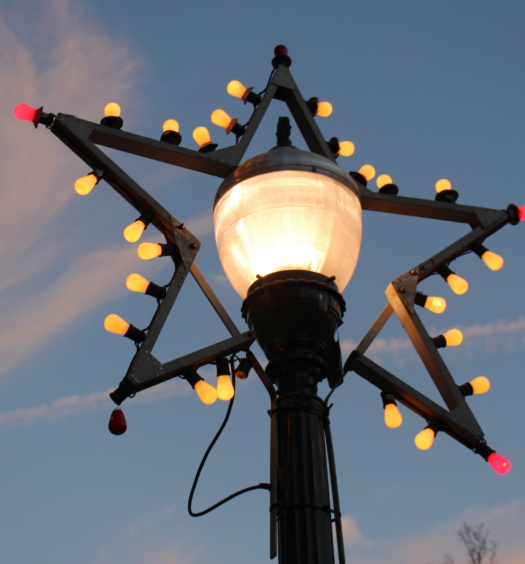Fall Back, Spring For Words: A Column by Lynn Rebuck
Although the time change from Daylight Saving Time happened a weeks ago, I still haven’t adjusted. It usually takes me six months.
While most people are aware that the whole concept that daylight could be saved was invented by that irrepressible inventor, Benjamin Franklin, many are unaware that he conceived of the idea after pulling a candle-lit almost-all-nighter in France.
Mr. “a penny saved is a penny earned” Franklin finally crashed at 3 or 4 a.m. after being totally amazed by a new invention being demonstrated on QVC called the “oil lamp”.
At 6 a.m. he was so startled by the sunlight streaming into his room that he reasoned, in the midst of his sleep deprivation, that a drop of wax saved is a drop of waxed earned.
Interestingly enough (or not, you decide), Franklin first proposed his idea in a letter to the editor.
He reasoned that tons of wax and livre (which is books, money, or chopped liver according to my very vague French dictionary) could be saved if the Laissez-faire French would stop sleeping until noon.
He humorously suggested that a cannon be set off on the streets each morning to jolt people to wakefulness. Not a bad idea, especially for those hard-to-wake teens.
He also suggested a financial penalty for homeowners whose residences had shutters to keep the sunlight out. Today that would be the equivalent of a Levelor levy.
But the time-change concept didn’t go straight from Franklin’s quill to instantaneous world-wide acceptance. People were amused but resistant.
In 1907, William Willet, an English builder and the first one with a “Save the Daylight” bumper sticker, proposed the time change but with a more humane transition than the sudden one-hour shift: on each of four consecutive Sundays in April, at 2 a.m., set the clock forward a mere twenty minutes and back in like fashion in the fall.
He was ahead of his time. About 20 minutes ahead. The idea was mocked, dismissed, and eventually passed by legislators. Those lobbyists for the time industry were very persuasive.
People used to rely on local time from a town clock like we rely today on the time from our infallible computer screens (mine is still set on Pacific Time though I reside on the East Coast).
In the United States the entity that actually drove hardest for the standardization of time was the transportation industry, apparently so that eventually all airline passengers would know just how late their flight was.
Times have certainly changed since Franklin and Willet.
We now efficiently light our homes in the evenings with energy-saving 40-inch HD screens tuned to QVC, where tonight they are demonstrating lava lamps. I’ll probably be awake until 3 or 4 a.m.
This column was originally published in 2009. (c)2009-2022 Lynn Rebuck
 Lynn Rebuck writes an award-winning humor column that appears on LititzDailyNews.com. She claims the deadline for this column was 2 p.m. Pacific Time, not Eastern Time. Contact Lynn through the LititzDailyNews.com Facebook page or the LititzDailyNews.com Instagram account.
Lynn Rebuck writes an award-winning humor column that appears on LititzDailyNews.com. She claims the deadline for this column was 2 p.m. Pacific Time, not Eastern Time. Contact Lynn through the LititzDailyNews.com Facebook page or the LititzDailyNews.com Instagram account.













